We left our hot showers (after one more morning quickie) and headed out into the Central Area of the Gobi Desert. We are passing the Red Stupas on the way. They look much like the White Stupas except not nearly as large. As usual Baisa had to do a few tricks for us, such a camera hog, you would just not believe.
Gobi Gurvan Saikhan National Park
After this brief pause, it was on to the first stop that is high in a National Park, The Gobi Gurvan Saikhan, also known as the Three Beauties. The park has the only active Glacier in the southern half of Mongolia. While it is small, it is amazing that it never totally thaws, even in the heat of the Great Gobi. To reach the glacier you must walk about 4 KM through a narrow gorge. The route is full of chipmunks and ground squirrels of all types and with luck you may get to see one of the large Ibex rams that inhabit the gorge. Unlucky for us, we were not able to see one on this trip. At the end of the gorge you will find the small ice flow. During the summer the water beneath the ice is running but the ice is still thick enough to walk and slide on. The entire area is one of the most beautiful we encountered in Mongolia.
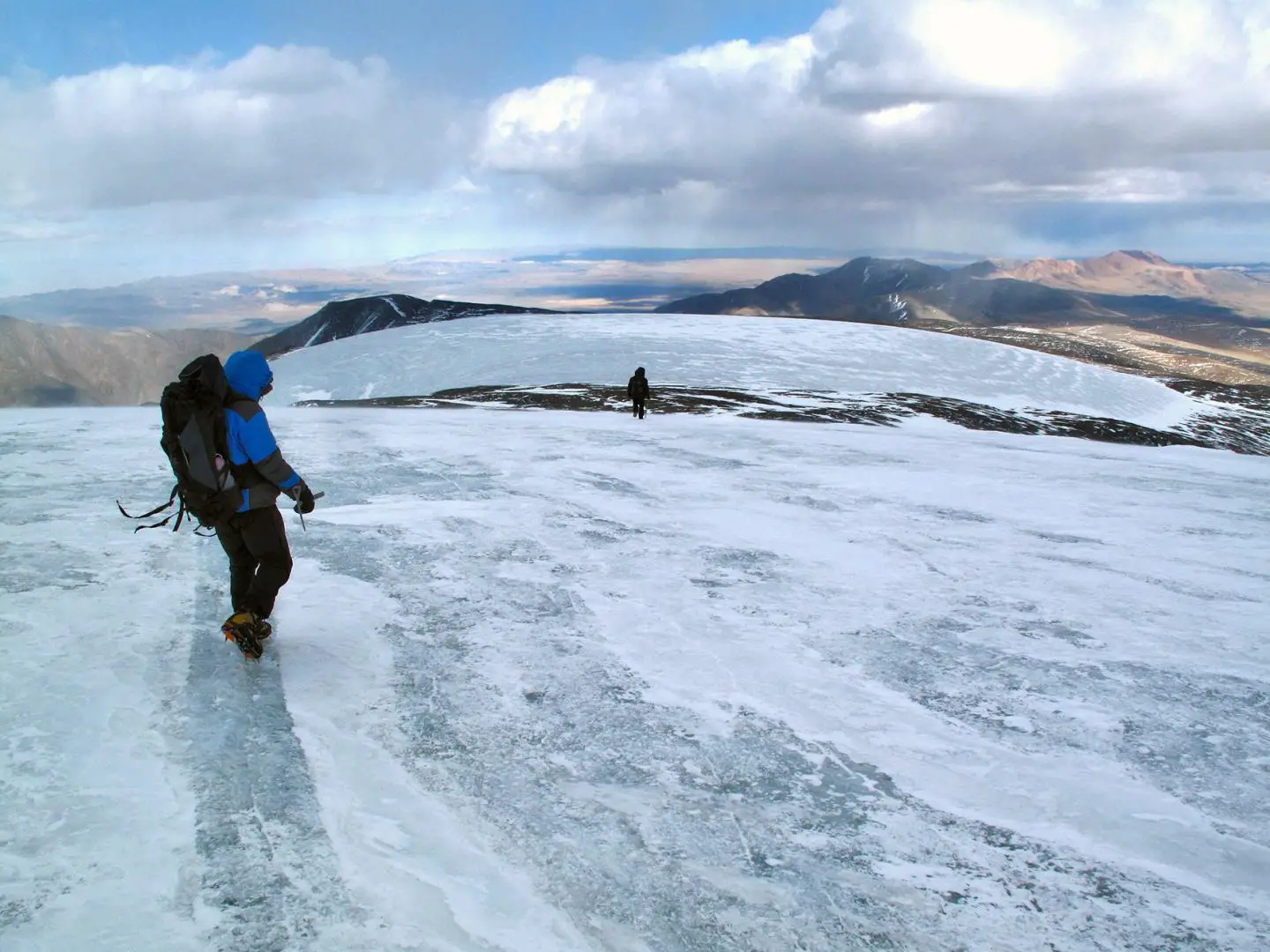
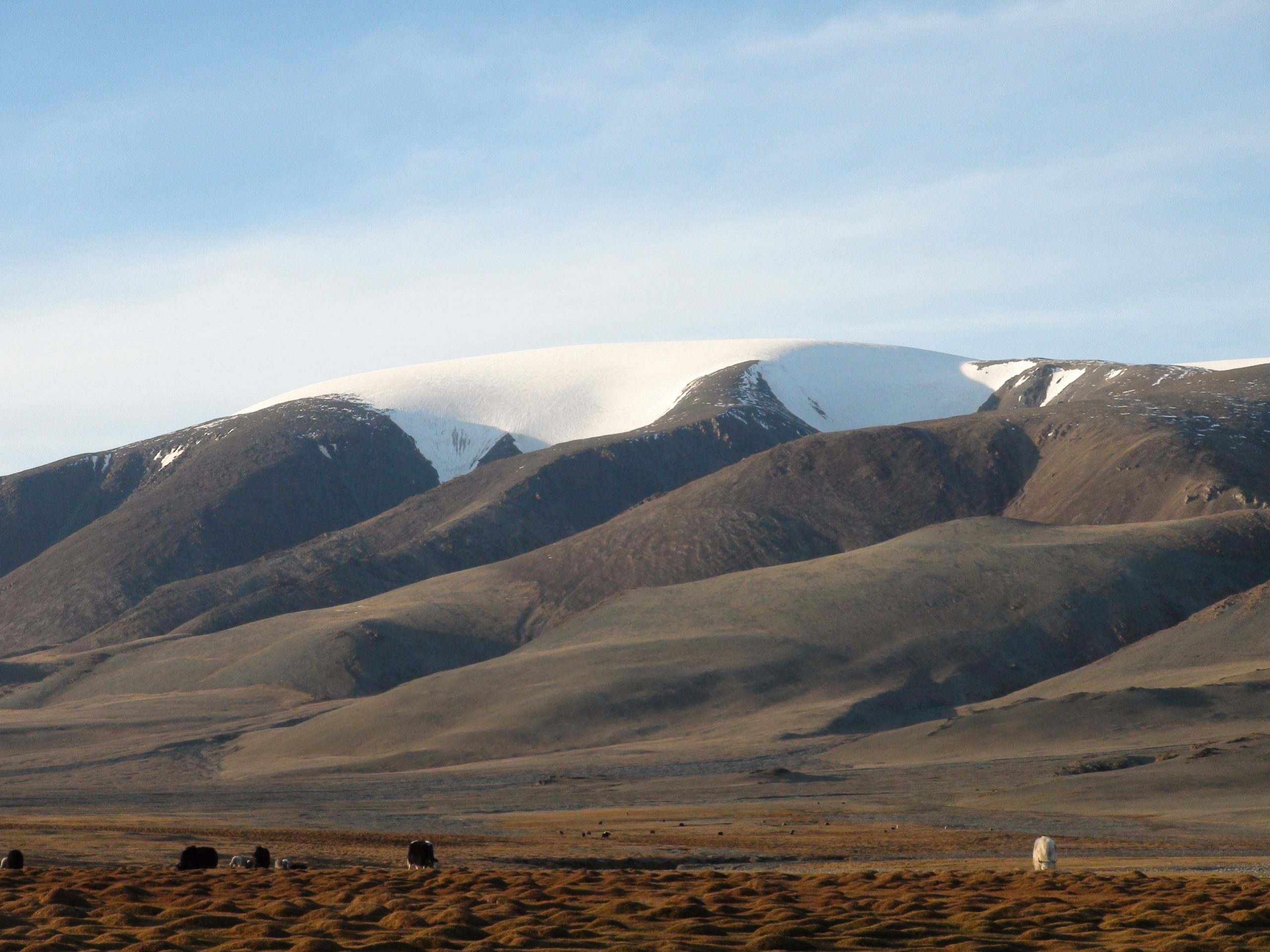
After a night in our Ger at the Three Beauties we were off in the van for what proved to be the roughest ride of the entire trip. 300 KM through the desert that is carved each year by the melting snows of winter and the landscape is one huge mess to cross. A short burst of speed then slam on the brakes for the next wash out and this goes on for the entire 300 KM.
Sand Dunes in the Gobi
Our destination is the huge Khongoryn Els Sand Dunes. The dunes are 200 meters high, 12 miles wide and about 150 miles long. We will be staying with a good friend of Oyuna who is a camel and goat herder. He will be taking us on the Gobi dunes part of the adventure. His family gers are located at the bottom of the highest peaks in the dunes. A great place to climb for a spectacular view of the entire region. The climb up is about 200 meters and takes from 40 minutes to as much as 120 minutes depending on your stamina. The last half of the climb is pretty much is done on hands and knees, much too steep to walk up. When you finally reach the summit you are at the top of a razor thin area and to stand, you must have a foot on either side. After the long hike up you just want to stay at the top for as long as possible looking at the view of the other side. The ‘run down the dunes’ is much more enjoyable and a lot faster. After two days of hiking and riding camels in the sand it is time to now head to a place known as BAYANZAG / FLAMING CLIFFS.
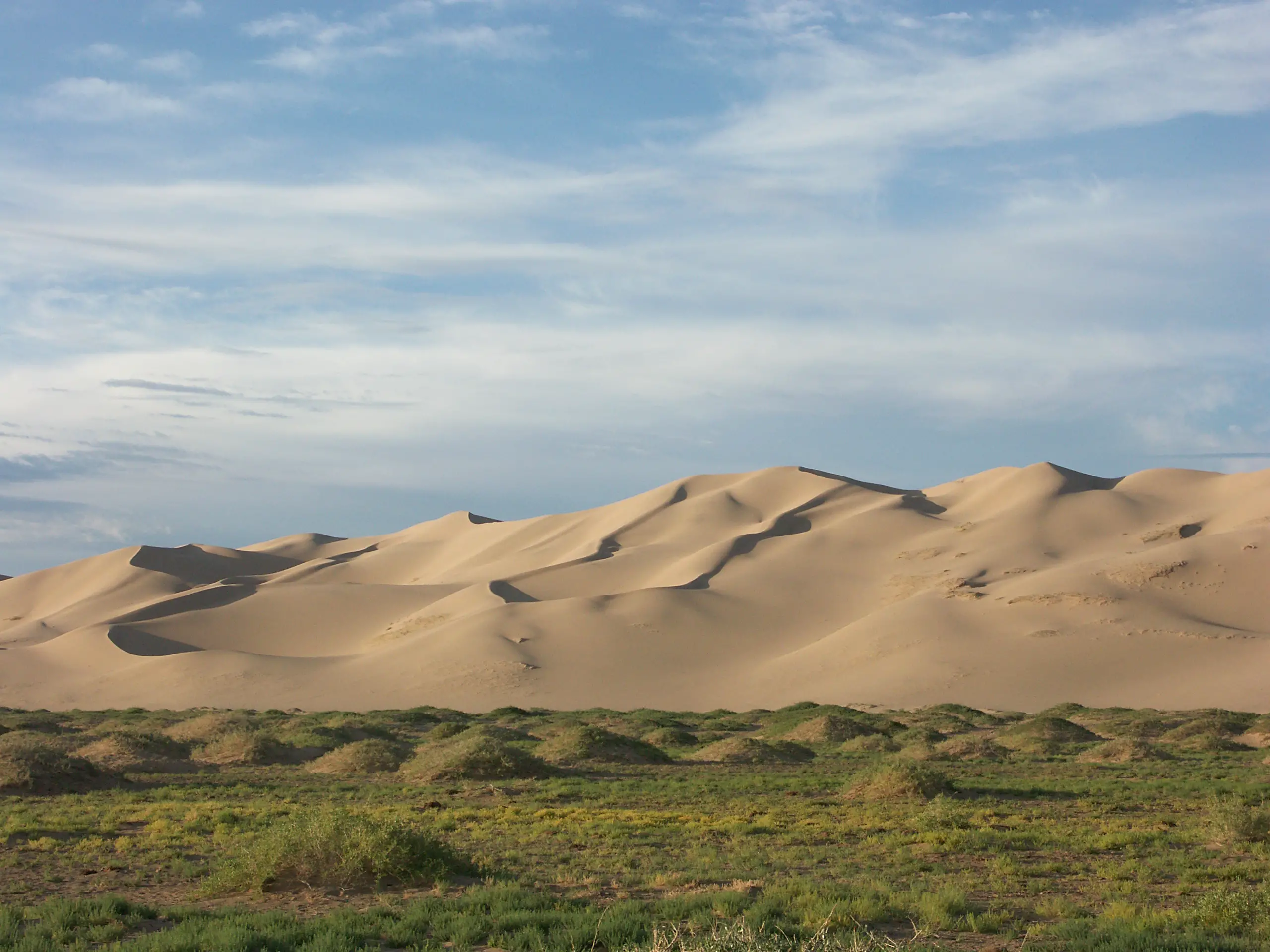
Flaming Cliffs
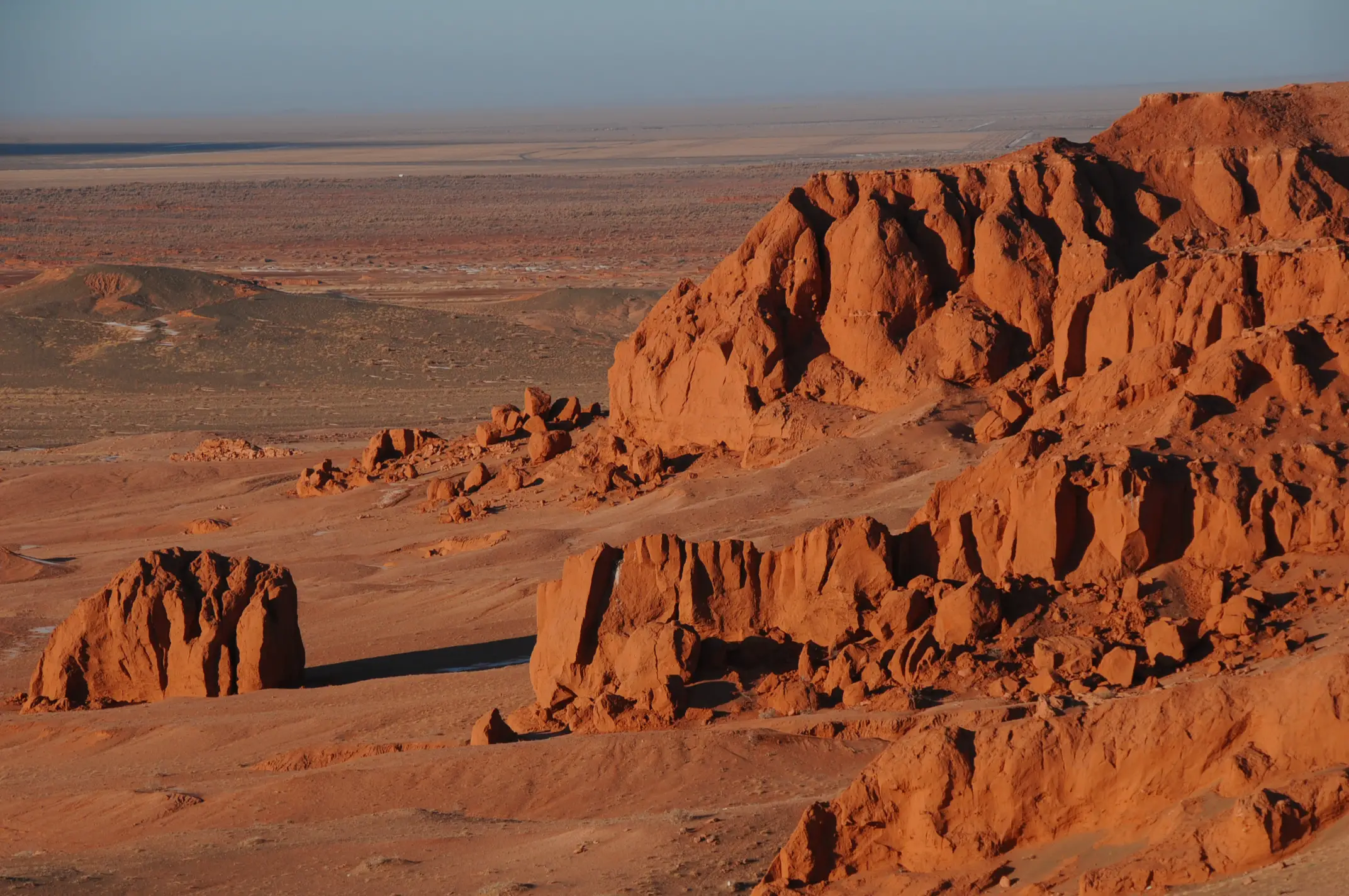
The ride to the cliffs, while not as bad as the road into the dunes, was still very rough. After clearing the first mountain pass we were back on the flat steppe floor and flying along through the well traveled ruts with another van we had picked up at the dunes. The two travelers, Fiona and Shawn, are from Australia. They had contracted a driver only and had trouble with their van every day since the start of the trip several days before. They decided to travel along with us in case of more problems. We made great time and then started hitting more and more rain. In the steppes, rain means instant problems. We had to stop and help pull several vans out of the mud along the way to the cliffs.
The cliffs are famous in Mongolia for the huge amount of dinosaur bones and fossils that have been dug out of the soft red clay. The ger village we stayed in had a small complete dinosaur that the owner had dug out by himself long before it became a protected area. The flaming name comes from the brilliant red of the clay at sunset. We spent the afternoon at the cliffs and then went back to the Gers for dinner and a movie on the computer.
Monastery Ruins
Next on our route was the Saikhan Ovoo which is a small village in the Middle Gobi province. Near a sharp curve in the river you will find the remains of two old monasteries ruins, the Barlim Khiid is located on the north bank and the Khutagt Khiid located on the south bank. Originally monastery had about 500 monks and was erected in the late 18th century as dedication in honor of the first visit to Mongolia by a Dalai Lama. The monastery was reopened in 1990 and current Dalai Lama visited in 1992.
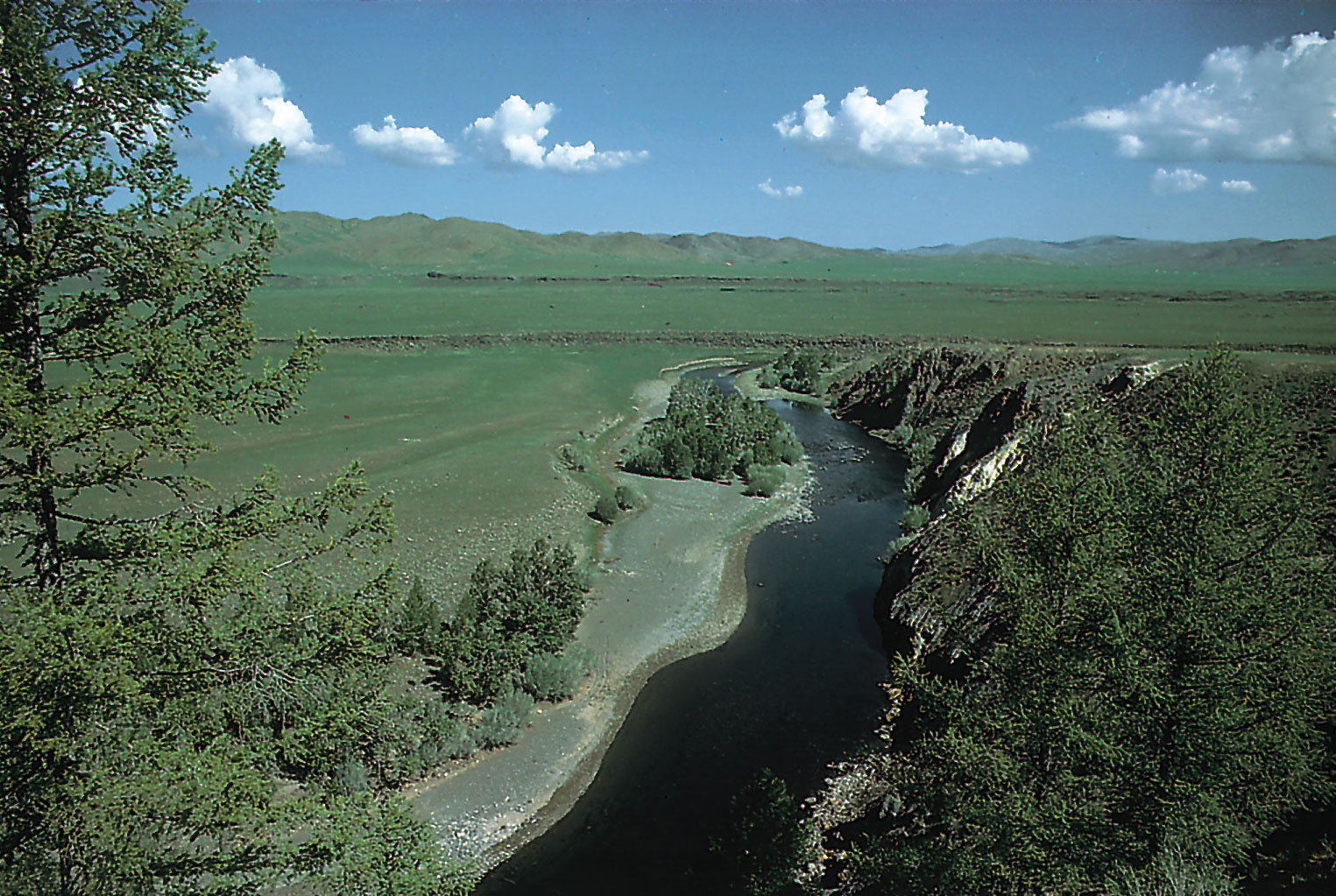
It was the more enjoyable stop in the Gobi with a small river that we camped by with wild sheep occasionally showing themselves on the mountains around the campground. This would be our last stop in the Gobi and we would be on to the waterfall and the Mountains of the North.
All our photographs that we process will be published here.
